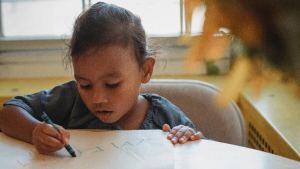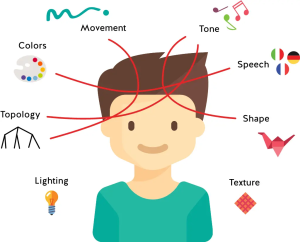How to Help Your Child with Dyslexia Connect Letters and Sounds
Raising a child with dyslexia can be a challenging yet deeply rewarding journey. Watching your little one struggle with reading while wanting nothing more than to help them can tug at your heartstrings. It’s essential to remember that dyslexia doesn’t define your child’s potential. With the right guidance and support, your child can learn to connect letters and sounds, paving the way for improved reading and writing skills.
In this blog, we’ll explore ways you can help your child with dyslexia build these connections. Whether you’re a parent, teacher, or caregiver, your role is vital in nurturing their confidence and skills.
Understanding Dyslexia
Before diving into how to help your child with dyslexia, it’s important to understand what dyslexia is. Dyslexia is not an indication of low intelligence or laziness. It is a learning difference that primarily affects reading and spelling. Children with dyslexia often have difficulty connecting letters to their corresponding sounds, making reading a more complex task.
For many children, this can be frustrating and disheartening. However, with patience, practice, and encouragement, they can develop strategies to overcome these challenges.

Focus on Building Confidence
One of the first and most important steps in helping your child with dyslexia is to boost their confidence. Struggling with reading can lead to feelings of failure and frustration. As a parent, it’s vital to offer reassurance that their worth is not tied to how well they can read. Celebrate the small victories, whether it’s recognizing a letter, sounding out a word, or even attempting a difficult task.
When your child with dyslexia feels supported and valued, they’ll be more willing to tackle challenges with letters and sounds.
Break Down Letters and Sounds
Helping a child with dyslexia connect letters to sounds begins with breaking things down into smaller, manageable pieces. Start by focusing on phonemic awareness—this is the ability to hear, identify, and manipulate the sounds in words.
Here are a few activities that can help:
- Rhyming Games: Play games that focus on rhyming. Say two words and ask your child to tell you if they rhyme or not. This helps them become aware of sound patterns.
- Sound Matching: Choose a sound (for example, the sound of the letter “b”), then come up with words that start with that sound. Ask your child to think of words too!
- Clapping Syllables: Say a word and clap out each syllable together. For example, say “ba-na-na,” clapping once for each syllable. This helps break words down into easier-to-process chunks.
Use Multi-Sensory Learning Techniques
Children with dyslexia often benefit from multi-sensory learning, which engages more than one sense at a time. This can help them grasp the connection between letters and sounds more easily.

For example, when teaching a letter sound, encourage your child to trace the shape of the letter in the air or with their finger on a textured surface. Say the sound of the letter together while tracing. This links the physical act of writing with the sound, making the learning process more engaging and memorable for your child with dyslexia.
You can also use materials like sand, clay, or even shaving cream to form letters. Allowing your child to feel the letters as they form them helps solidify the connection in their brain.
Be Patient and Persistent
As parents and caregivers, it’s crucial to remain patient. Celebrate the small milestones along the way and avoid putting too much pressure on your child.
It’s okay if progress seems slow at times. Keep in mind that your consistent support will make a world of difference. With each new connection they make between letters and sounds, their confidence will grow.
Read Aloud Together
When you read, your child gets to hear the natural flow of words and experience the joy of storytelling, without the pressure of having to read on their own.

Point to the words as you read, allowing your child to see how the letters form sounds and words. You can also encourage them to join in on words they recognize. This helps build a sense of accomplishment and reinforces the connection between letters and sounds.
Use Technology and Tools
There are many tools and technologies designed to help children with dyslexia learn to connect letters and sounds. From apps that teach phonics in fun and interactive ways, to audiobooks that allow your child to follow along while listening to the story, these resources can be a valuable part of your child’s learning toolkit.
Consider using a mix of traditional teaching methods and technology to create a varied and engaging learning experience for your child with dyslexia.
Create a Supportive Environment
Your child with dyslexia will thrive in an environment where they feel safe, supported, and encouraged. It’s important that your home or classroom is a place where mistakes are seen as learning opportunities rather than failures.

Provide a comfortable and quiet space where they can practice reading without distractions. Surround them with positive affirmations and a belief that they can succeed.
Work with Specialists
While your support at home is essential, a specialist in dyslexia or reading intervention can offer additional expertise. A trained professional can assess your child’s specific needs and create a personalized plan to help them improve their reading skills.
Working together with a specialist ensures that your child with dyslexia receives the most comprehensive support possible.
Final Thoughts
Helping your child with dyslexia connect letters and sounds can be a gradual process, but with love, patience, and consistent support, your child can make meaningful progress. It’s important to celebrate their efforts, no matter how small, and continue fostering a positive learning environment.
Remember, your child with dyslexia is capable of incredible things. With the right encouragement and guidance, they can overcome the obstacles that stand in their way and develop a lifelong love of reading.